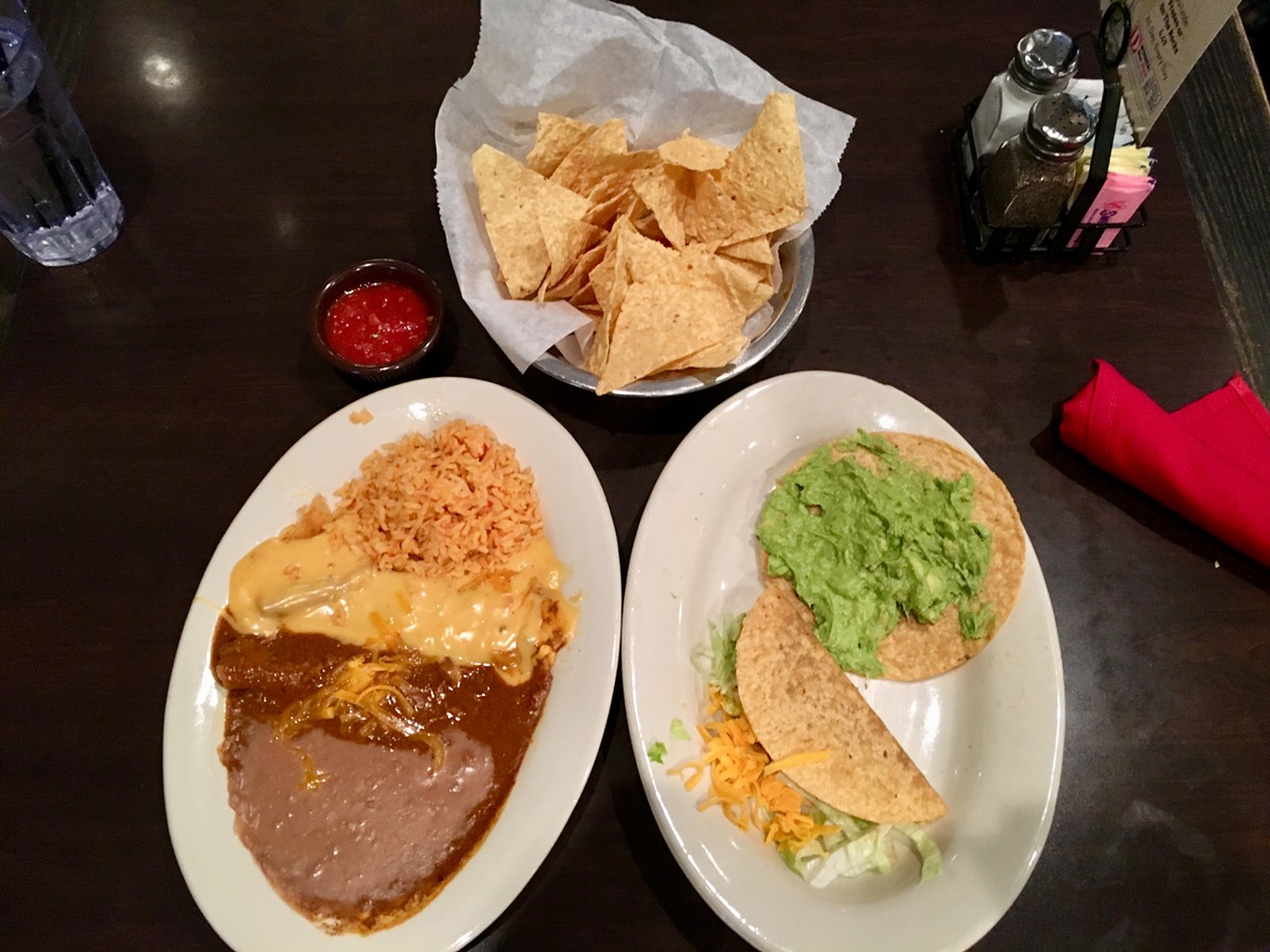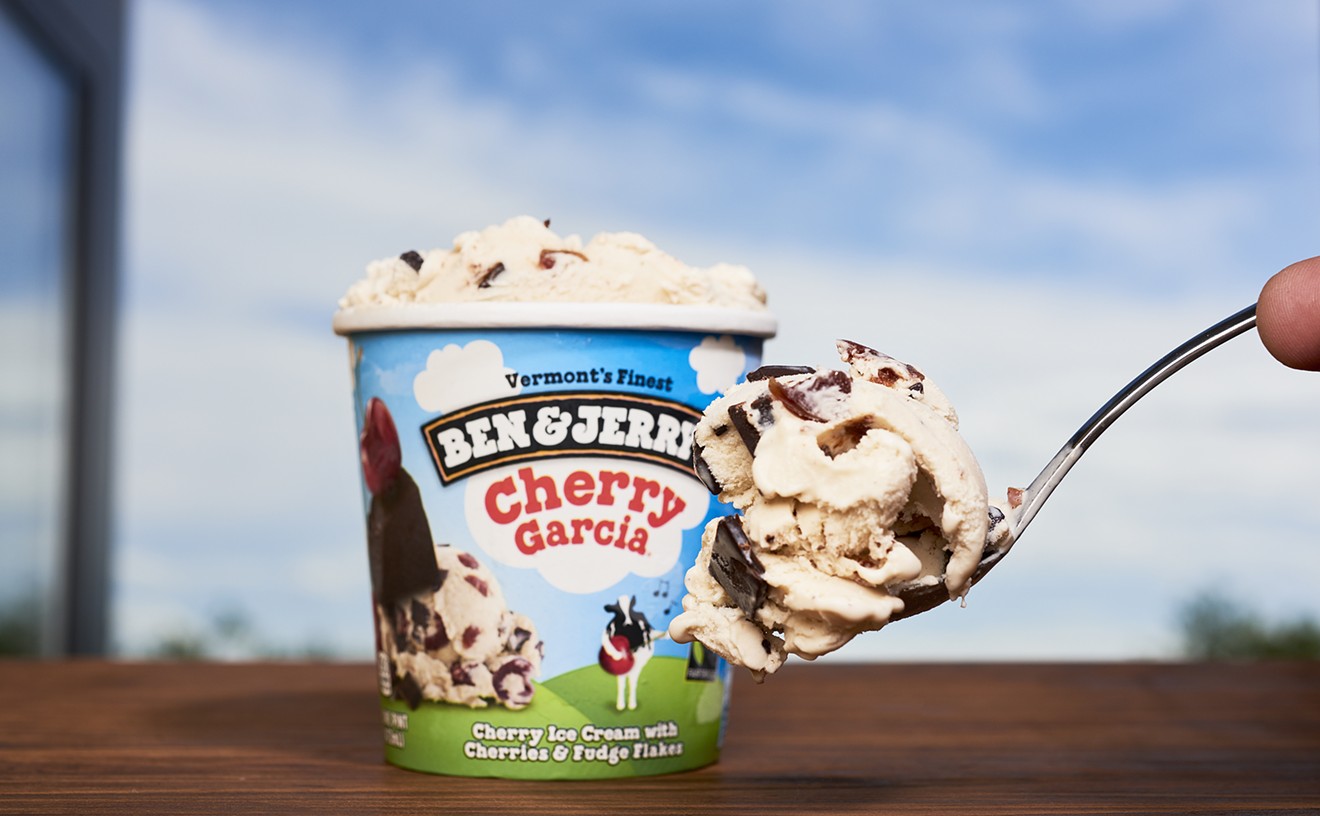A few minutes after noon, the line to get into El Fenix weaves out the front door and onto the street. The wait grows as an ear-splitting, symbol-like clash fills the restaurant — a stack of dishes and plates clamoring to the floor — and cars back up in the parking lot. It’s all part of the ride at El Fenix, which, at almost 100 years old, isn’t a restaurant as much as it’s a Tex-Mex theme park.
On September 15, 1918, Col. Theodore Roosevelt was seen in the Sunday picture-edition of The New York Times hoisting his hat into the air after the crowd’s cheers of his Lafayette Day address in Washington, D.C. It was the 160th anniversary of the birth of Marquis de Lafayette and the fourth anniversary of the World War I battle of Marne. It’s also the day Miguel Martinez rebranded his Martinez Cafe as El Fenix in Dallas.
Half a dozen fried oysters with tomato sauce and a tenderloin steak on toast (with bacon) led the menu for 35 cents and 75 cents, respectively. The Special Mexican Dinner — one cheese taco, one enchilada, tamales smothered in chile con carne, fried beans, fried rice, tortillas (or bread), salad, a drink, and a dessert of sliced pineapple, candy or ice cream — cost 80 cents.
“Ten years ago, people were like, you need to put mole on the menu. You know what? That’s not who El Fenix is,” says Tim Schroeder, senior vice president of operations for Firebird, the restaurant group that took ownership of El Fenix a decade ago. “We wanted to stay true to the roots.”
Martinez washed dishes at the Adolphus before starting his restaurant. Today, El Fenix is the longest-standing Mexican restaurant chain in the U.S., with 22 locations in Texas. It’s lived through two world wars, the Great Depression and Tonya Harding’s husband allegedly bashing Nancy Kerrigan’s leg.
It’s breathtaking to imagine Dallas surging into the sky around El Fenix, 100 years wheeling forward like a time-lapse in a sci-fi film. Whether you like the food or not, it feels like an insufferable position to disrespect the idea that you can still order the same damn tortillas smothered in chile con carne that were on the menu a few years after the assassination of Archduke Franz Ferdinand.
A hop-skip away from the gleaming cube of the Perot Museum, the downtown location of El Fenix churns. All spots in the restaurant-theme park are full. Sitting at the bar, I order the Taxco plate, which is one beef picadillo taco, one cheese enchilada with chile con carne, one cheese enchilada with chile con queso and a tostada smeared with guacamole for $12.49. El Fenix is known for its speed, so I couldn’t help but time my order. It arrived in exactly two minutes and 34 seconds. I’ve taken longer to make coffee in a Keurig.
The cheese enchilada, cloaked in queso (the absurdly bright yellow kind), is mostly bland and wet. The chile con carne has a rich, meaty oil to it, and the beef picadillo taco is powdery and dry. It all goes down quickly as generic food, then tastes better when washed with a cold beer.
It’s probably true that every Dallasite has an El Fenix story. It feels like a rite of passage in our city. So how did the chain, which serves mostly mediocre Tex-Mex, last an entire century? The simple answer seems to be that the restaurant stuck to what it knows.
“It’s still yellow cheese. It’s still iceberg lettuce,” Schroeder says. “We’re not trying different cheeses and different sauces. It is a true Tex-Mex menu. If you’ve been born or raised in Dallas, you’ve been to an El Fenix.”

The view from the bar at downtown's El Fenix. The restaurant first opened as Martinez Cafe in 1916 and changed its name to El Fenix in 1918.
Nick Rallo
“Dallas grew around El Fenix,” Schroeder says.
The lunch meal took less time than an episode of Friends. Checking out up front, I’m told to move two steps to the left as I sign and tip. A line’s building up at the register, too. In a few months, the chain will host a centennial celebration with margarita specials and $1 queso.
Whether you like it or not — the El Fenix theme park line builds up, longer and longer on the Woodall Rodgers sidewalk — it's a singular kind of experience.
El Fenix, 1601 McKinney Ave.












